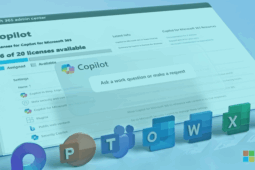
Moving to Microsoft Teams Phone can transform your organization’s communication. It consolidates voice, video, and collaboration into a single platform, boosting efficiency, cutting costs, and improving team connectivity.
However, a successful migration requires careful planning and execution.
This ZIRO article provides a comprehensive Microsoft Teams Phone Migration Checklist. Follow these essential steps to ensure a seamless transition.
What Is Microsoft Teams Phone Migration?
Microsoft Teams Phone migration is the process of transitioning an organization’s existing telephony system to Microsoft Teams Phone. This involves moving from traditional landlines, PBX, or VoIP systems to the MS Teams unified communications platform.
Teams Phone consolidates communication tools within the Microsoft 365 ecosystem. It lets your employees make and receive calls (both internal and external) on the same platform they already use for messaging, collaboration, and file sharing.
Having everything under one platform makes life easier for everyone.
Why Is Having a Microsoft Teams Phone Migration Checklist Important?
Migrating to Microsoft Teams Phone can be complex, with many moving parts. A well-structured checklist prevents you from overlooking critical steps and helps you:
- Stay Organized: Track tasks from infrastructure assessments to user training to avoid missing critical steps.
- Avoid Common Pitfalls: Proactively address issues like bandwidth limitations, device compatibility, and regulatory compliance.
- Minimize Downtime: Plan for minimal business disruptions and ensure a smooth transition with fewer interruptions.
- Ensure User Adoption: Include user communication and training to help employees become comfortable with the new system.
- Facilitate Testing and Troubleshooting: Conduct pre-rollout testing to catch issues early and make necessary adjustments.
Basically, a checklist keeps your migration on track. It reduces the risk of costly mistakes and ensures a successful transition to Teams Phone.
Our Effective Microsoft Teams Phone Migration Checklist
1. Pre-Migration Planning
The first thing on the list is to prepare for your migration to Microsoft Teams Phone.
Assess Your Existing Telephony System
- Evaluate your current setup, including legacy systems (PBX, VoIP) and call flows.
- Create an inventory of phone numbers, extensions, and specific user needs (e.g., call forwarding, voicemail).
- Compile CSRs (Customer Service Records) from your carriers if porting.
This assessment helps you meet key requirements and identify potential gaps.
Licensing Requirements
Determine the appropriate Microsoft Teams Phone licenses required for your organization. Microsoft offers various licensing options, such as Microsoft 365 Business Voice and Microsoft 365 E5, which include Teams Phone capabilities.
Ensure you select the right licenses to meet your organization’s needs and budget.
Bandwidth and Network Readiness
Poor bandwidth or incorrect network configuration can lead to call quality issues. To prevent this:
- Conduct a network assessment to check bandwidth capacity for Teams voice and video traffic.
- Configure Quality of Service (QoS) settings to prioritize voice traffic and minimize latency.
Regulatory Compliance
Compliance is crucial to avoid legal issues and ensure the security and privacy of your communications.
Ensure that your migration plan complies with relevant regulatory requirements. This includes understanding local laws and regulations regarding data privacy, call recording, and emergency services (E911).
2. Choose Your External Connectivity Option
Microsoft Teams Phone replaces your entire telephony structure, so you need to pick the right connectivity option. This determines how your organization connects with external phone networks (PSTN), impacting both functionality and cost.
You have four options:
- Direct Routing: Connects Teams with your existing PSTN provider through a Session Border Control (SBC). Ideal for businesses with complex telephony needs or specific carrier preferences. ZIRO offers a comprehensive Direct Routing as a Service (DRaaS) solution for easy connection.

- Microsoft Calling Plans: Provides a straightforward, out-of-the-box solution managed by Microsoft. Includes phone numbers, call minutes, and other telephony features. Best for organizations seeking simplicity.
- Operator Connect: Connects Microsoft Teams to your telecom operator’s network directly through the Teams Admin Center. Simplifies setup and provides enhanced support from your telecom operator.
- Teams Phone Mobile: Integrates mobile network services with Microsoft Teams. Allows users to use their mobile numbers within the Teams platform. Beneficial for organizations with a mobile workforce.
It’s important to select the option that best aligns with your organization’s existing infrastructure and future needs. Want to compare your options? We have a free quiz that will point you in the right direction.
3. Prepare the End Users
Next, you need to prepare your end users for the transition to Microsoft Teams Phone. This ensures a smooth adoption and minimizes disruptions.
Understand User Profiles and Use Cases
- Identify different user groups within your organization (e.g., desk workers, remote employees, customer service teams, executives).
- Define how each group will use Teams Phone (e.g., frequent international calling, mobile usage, call queues).
- Map each user profile to the appropriate Teams Phone features, like voicemail, call forwarding, or call queue management.
Device Requirements
The success of your Teams Phone migration heavily depends on having the right hardware in place. Determine your users’ device requirements and ensure that all necessary hardware, such as headsets, desk phones and mobile devices, are compatible with Microsoft Teams Phone.
User Communication and Training
Develop a comprehensive communication and training plan. Inform users about the upcoming changes. Also, provide training sessions based on their roles (e.g., basic training for desk workers and advanced training for customer support teams) and offer resources to help them adapt to the new system.
4. Testing and Piloting
Testing the system and running a pilot migration before fully deploying Microsoft Teams Phone across your organization helps identify potential issues early on.
Test Call Functionality
- Make test calls to verify basic functionality.
- Check call quality across different network conditions.
- Verify that all features (call forwarding, voicemail, etc.) work as expected.
Run a Pilot Migration
- Select a small group of users for the pilot.
- Migrate these users to Teams Phone.
- Gather feedback on their experience.
- Identify and resolve any issues that arise.
Use the insights from your testing and pilot to make necessary adjustments before full deployment. This step is crucial for ensuring a smooth transition for your entire organization.
5. Full Deployment
After successful testing and piloting, it’s time to deploy Microsoft Teams Phone across your organization fully. This is where you execute your migration plan, transitioning all users to Microsoft Teams Phone.
This entails:
- Port phone numbers from your old system to Teams Phone.
- Assign appropriate licenses to all users.
- Confirm proper setup for all user profiles.
- Implement necessary integrations, including third-party applications.
Large organizations may consider phased migration to manage the process more effectively. Ensure that the process is well-coordinated to minimize disruptions.
6. Post-Migration Monitoring and Support
Monitor the system closely after deployment to identify and resolve any issues quickly.
- Use the Microsoft Teams Admin Center and Call Quality Dashboard to monitor call performance metrics such as call quality, dropped calls, and network issues.
- Provide ongoing post-migration training and documentation for users to ensure they are comfortable with the new system and its features.
- Regularly check for security and compliance issues, ensuring that emergency calling features, call recordings, and data storage comply with local laws and internal policies.
Get Help With Your Microsoft Teams Phone Migration
Microsoft Teams Phone migration isn’t a walk in the park. Without expert guidance, you risk disrupting business operations and frustrating employees.
That’s where ZIRO comes in.
We offer a proven and guaranteed blueprint for a successful Microsoft Teams Phone System migration. From planning to execution and support, we handle all the complexities, including Direct Routing, SIP trunks, Microsoft Calling Plans, ensuring your system is fully optimized from day one.
Several organizations have benefited from our approach to mitigate risks, which reduces risk and ensures strong support. For example, we helped a major Canadian law firm migrate from its legacy phone system to Microsoft Teams Phone, ensuring that 600 workers across different locations can now communicate more efficiently.
Conclusion
Migrating to Microsoft Teams Phone can be overwhelming, with potential pitfalls like downtime, poor call quality, or failed configuration. Organizations can avoid these pitfalls with a well-structured approach, which is what a checklist provides. ZIRO takes all the stress and worry away by offering a migration strategy that’s tailored to your specific needs. Ready to make your Microsoft Teams Phone migration a success? Contact us today to book a discovery call.
Ready to take your unified communications from headache to hassle-free?
No throwing darts at proposals or contracts. No battling through the back-end. No nonsense, no run-around.



